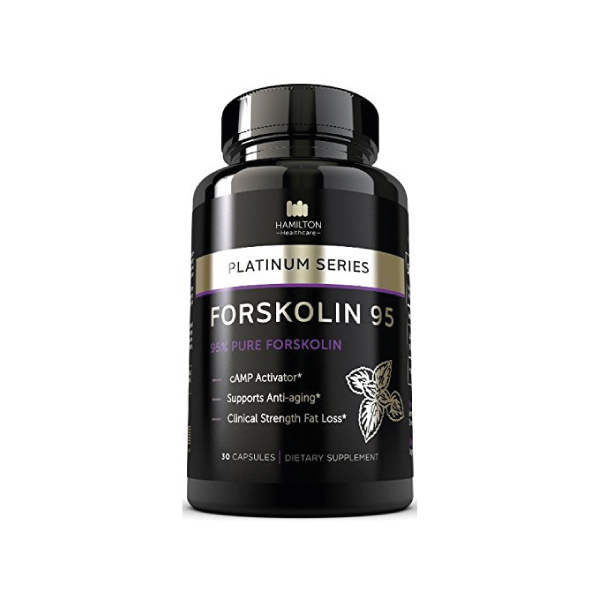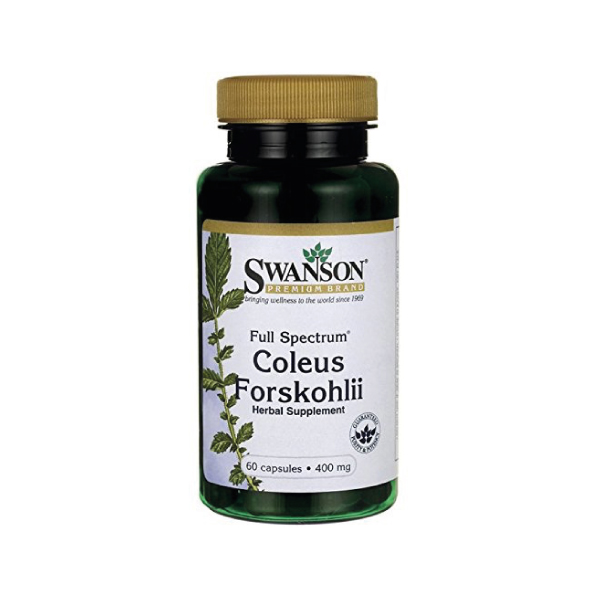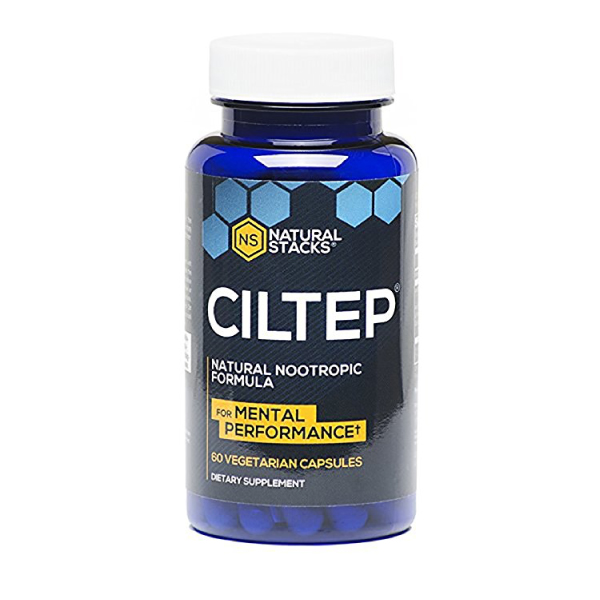What is Coleus?
Coleus is easily identified by its bright colors, for which it is popular as an attractive garden plant. Being a member of the mint family, it's no surprise that it's considered an invasive species in many parts of the world.
Medicinally, coleus is useful for cardiovascular disease, including hypertension, thrombosis, and angina. Much of its medicinally ability comes from a constituent known as forskolin, which has been well documented to increase cyclic-AMP. This activity also makes it useful as a nootropic compound where it has seen an increase in popularity in recent years.
+ Indications
- Congestive heart disease
- Asthma
- Psoriasis
- Hypertention
- Ischemic heart disease
- Thrombosis
- Weight loss support
+ Contraindications
- None noted
What Is Coleus Used For?
Forskolin concentrates are popular as a nootropic ingredient in formulas such as Ciltep
Other uses include cardiovascular disease like angina, hypertension, and thrombosis.
Additional Usage (not well studied)
One of the lesser studied, but interesting suggested uses of forskolin in particular is as a protectant agains organophosphate and neurotoxic chemical warfare. Particularly cholinergic substances like Serin gas.
Traditional Uses of Coleus
Similar species are reportedly used in India as medicine, however Coleus forskkohlii is generally only eaten as a condiment. Its roots can be found in pickled form. [1].
Other traditional uses includes hypertension, congestive heart failure, eczema, colic, respiratory disorders, painful urination, insomnia, and convulsions. [2].
Herb Details: Coleus
Herbal Actions:
- Increases cAMP
- Hypotensive
- Antiplatelet
- Bronchospasmolytic
- Cardiotonic
- Digestive stimulant
- Thyroid enhancer
- Weight loss supportive
Weekly Dose
- (1:1 Liquid Extract)
40–90 mL - View Dosage Chart
Part Used
- Root
Family Name
- Lamiaceae
Distribution
- Australia, Southeast Asia
Constituents of Interest
- Forskolin
- Coleonols
- Diterpenes
Common Names
- Coleus
Duration of Use
- Long-term usee is acceptable, but recommended to take periods without using the herb every 3–4 weeks.
Products Containing Coleus
Botanical Description
Coleus is a part of the Lamiaceae (mint) family, which has roughly 8000 species. It has characteristic brightly colored leaves, but can also have more modest green leaves as well.
The species name, forskohlii is named after the Finnish botanist, Forskal. [2].
Coleus grows to about 60 cm (2 feet) in height, and sports characteristically colorful, teardrop shaped leaves. This colour can vary greatly and is dependant on the amount of light it receives. [2].
The root is a golden brown color, with thick, fibrous, and radially spreading tendencies. [2].
Harvesting Collection, and Preparation
The roots should be collected in the fall when the forskolin content is at its peak. This will result in a brighter colored root. [2].
Pharmacology & Medical Research
+ CAMP Inhibition
Forskolins primary action is through antagonism of cAMP and cAMP-mediated functions. It does this mainly through activation of the enzyme adenylate cyclase [5]. This action on cAMP then results in an inhibition of basophil and mast cell degranulation and histamine release [6], lower blood pressure [9], reduces intraocular pressure [7], inhibits platelet aggregation [8, 10], promotes vasodilation [9, 11], promotes bronchodilation [12], promotes thyroid hormone secretion [13, 14], stimulates lipolysis [15], and produces a positive inotropic action on the cardiac muscle cells of the heart [16].
Phytochemistry
Coleus forskohlii contains the diterpene; forskolin (increases cAMP), volatile oils, other diterpenoids, coleonols [1, 2].
Forskolin is considered by many to be the main active constituent in coleus. It was originally called coleonol when it was first discovered in 1974. It is now referred to as forskolin since the discovery of other coleonols inside the coleus plant [2, 3]. Forskolin, as well as
Although forskolin is considered the main active ingredient, and the vast majority of research on this herb have been on this constituent, early studies have unsurprisingly suggested other components of the coleus plant such as the volatile oil, diterpenes, and coleonols also play a part in the medicinal action of the coleus plant [4].
Clinical Applications Of Coleus:
Coleus is still in need of some quality research for the conditions it is recommended for, however, in the realm of cardiovascular disease, forskolin extracts have proven to yield good results. Currently the best use of this herb is in the concentrated extract in a formula along with other ingredients. It is also showing some usefulness as an ingredient in nootropic formulas for its ability to increase cAMP.
Recent Blog Posts:
References:
Bone, K. (2003). A clinical guide to blending liquid herbs: Herbal formulations for the individual patient. Edinburgh [u.a., MO: Churchill Livingstone.
Coleus forskohlii. Monograph. (2006). Alternative Medicine Review : A Journal Of Clinical Therapeutic, 11(1), 47-51.
Sakscna AK. Green MJ. Shue HJ. et al. Identity of coleonol with forskolin: structure revision of a base-catalysed rearrangement product. Tetrahedron Leu 1985:26:551-554.
Ammon HP. Muller AB. Forskolin: from an Ayurvedic remedy to a modern agent. Planta Med 1985:6:473-477.
Forskohl's Coleus - Coleus forskohlii BRIQ (Lamiaceae) Phytochemicals, http://vvww. chromadex.com/Phytosearch/Forskolin.html
Marone G. Columbo M. Triggiani M. et al. forskolin inhibits the release of histamine from human basophils and mast cells. Agents Actions 1986:18:96-99
Caprioli J. Sears M. Bausher L. et al. Forskolin lowers intraocular pressure by reducing aqueous inflow. Invest Ophthamol Vis Sci 1984, 25:268-277.
Agarwal KC. Parks RE Jr. Synergistic inhibition of platelet aggregation by forskolin plus PGEl or 2- fluoroadenosine: effects of 2,5-dideoxyadenosine and 5-methylthioadenosine. Biochem Pharmacol 1982, 31, 3713-3716.
Dubey MP. Srimal RC. Nityanand S. Dhawan BN. Pharmacological studies on coleonol, a hypotensive diterpene from Coteus forskohlii. J Ethnopharmacol 1981:3:1-13.
Wong S. Mok W. Phaneuf S. et al. Forskolin inhibits platelet-activating factor binding to platelet receptors independently of adenylyl cyclase activation. Eur J Pharmacol 1993:245:55-61.
Wysham DG. Brotherton AF. Heistad DD. Effects of forskolin on cerebral blood flow: implications for a role of adenylate cyclase. Stroke 1986:17:1299- 1303.
Lichey I. Friedrich T. Priesnitz M. et al. Effect of forskolin on methacholine-induced bronchoconstriction in extrinsic asthmatics. Lancet. 1984:2:167.
Haye B, Aublin JL. Champion S. et al. Chronic and acute effects of forskolin on isolated thyroid cell metabolism. Mol Cell Endocrinol 1985:43:41-50.
Roger PP. Servais P. Dumont JE. Regulation of dog thyroid epithelial cell cycle by forskolin. and adenylate cyclase activator. Exp Cell Res 1987:172:282-292.
Okuda H. Morimoto C. Tsujita T. Relationship between cyclic AMP production and lipolysis induced by forskolin in rat fat cells. J Lipid Res 1992;33:225-231.
Lindner E. Dohadwalla AN. Bhattacharya BK. Positive inotropic and blood pressure lowering activity of a diterpene derivative isolated from Coleus forskohlii: forskolin. Arzneimitielforscung 1978:28:284-289.














As COVID-19 continues to spread around the world, we’re getting a lot of questions on what the potential role of herbal medicine is during the outbreak. Learn how the virus works and how to limit your chances of transmission.